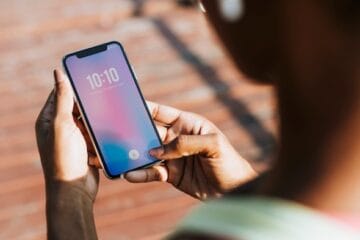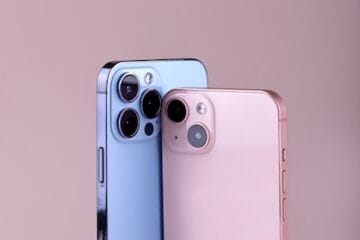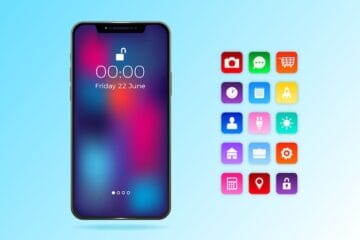During Apple’s iPhone 7 launch, Phil Schiller explicitly listed 10 ways in which the latest handsets are improvements on their predecessors. He laboured on the improved camera, extra power, the better battery life and the ‘courageous’ decision to remove the headphone jack.
He didn’t, however, mention that the dimensions are identical to the iPhone 6S; you can’t charge your phone while listening to music and the brand new software isn’t unique – almost everyone can download iOS 10 for their older models.
Not to mention that the 10 new features will end up costing customers an eye-watering £1,000 for the high-end Plus model if they want to upgrade. So has Apple pushed its fans too far, or are the phones worthy of your money?
Contents
Design
The iPhone 7 is the most similar of the two handsets to its predecessor. The dimensions are identical but the iPhone 7 is lighter than the 6S – 138g versus 143g. The iPhone 6, by comparison, is thinner and lighter than both at 6.9mm (compared to 7.1mm) and 129g. Both the iPhone 6S and iPhone 7 have 12MP rear-facing cameras but the iPhone 7’s front-facing camera has been upgraded from a 5MP to a 7MP sensor.
The antenna strip has been moved to the top on the iPhone 7 and, of course, the headphone jack has been removed; leaving the Lightning port, and adding stereo speakers. The speakers are a welcomed addition, borrowing from the likes of HTC, and it’s a noticeable improvement when listening to music or watching videos without headphones.
The lack of a headphone jack, on the other hand, is inconvenient to say the least. Aside from Apple’s comment about the decision being ‘courageous’, the firm stresses it made the change because listening to music through the Lightning port improves the quality
.
It does, but it’s marginal. Plus, this marginal improvement doesn’t counter for the fact that you have to carry around an adapter at all times, this adapter adds a significant bulk to the headphones when plugged in, and you can’t listen to music and charge your phone at the same time. It is unlikely you’ll be wanting to do the latter that often, but that doesn’t excuse the fact.
With the headphone jack removed, there is more room for a larger battery (1960mAh up from the iPhone 6S’ 1715 mAh battery) – a much-needed improvement – and the taptic engine, less needed. This taptic engine means the traditional home button is replaced by a touch sensor that responds with a vibration when you press it. This takes a little getting used to, but once you’ve adjusted to it, it’s strange going back to using a button, and the taptic response is missed. A subtle shift in behaviour which Apple excels at.
This taptic engine also ‘clicks’ when you set an alarm, and vibrates when playing games. It feels similar to using a PS4 or Xbox controller but its a lot more subtle and nuanced. It’s a nice touch when using certain apps, but is little more than that.

Elsewhere, the iPhone 7 offers IP67 water resistance. On paper, this isn’t as resistant as Samsung’s handsets – and Apple notes it’s resistant, not waterproof – but tests have shown the iPhone 7 range can hold its own when submerged, and as a result may perform better than Apple has suggested. For existing iPhone owners, this is welcomed but for non-Apple users, it’s another feature that is playing catch-up.
Apple has ditched space grey for the iPhone 7 and introduced matte black and jet black. The former adds a real sophistication to the device and we were surprised how much a simple colour can add to our opinion of a handset. The latter, conversely, seems like a good idea but scratches easily and makes the phone too slippery for our clumsy hands.
The iPhone 7 is also available in silver, gold and rose gold. Prices start at £599 for 32GB, up to £699 for 128GB and £799 for 256GB.
Display
Apple claims the 4.7-inch display on the iPhone 7 is 25 per cent brighter than previous models and comes with a so-called P3 colour gamut which makes colours appear richer. Both claims are accurate. Photos, graphics and games look great on the display. Not quite as bright and rich as on the OnePlus 3, but a noticeable improvement on previous iPhones. The iPhone 7 has the now-standard Retina HD display giving it a PPI of 326; the same as the iPhone 6S and 6.
Elsewhere, more apps are embracing Apple’s 3D Touch and this feature feels more natural once you’re used to using the pressure-sensitive sensor home button. We’ve found ourselves gradually using 3D Touch for Citymapper, for example, or when posting toInstagram.
The display on the iPhone 7, and iPhone 7 Plus are both more responsive too. 3D Touch is not a feature we love, nor do we dislike it. Our only criticism is that we quite often enable 3D Touch actions when trying to copy a link or move an app and we’re still not used to the level of pressures needed for both.
Cameras

Apple made a lot of the improved camera on the iPhone 6S and it has done similar with the iPhone 7. The smaller of the two new models has the same 12MP sensor on the rear but it has an aperture of f/1.8 and a new six-element lens. Apple has also added optical image stabilisation to the iPhone 7, along with body detection, a Quad-LED True Tone flash, and wide colour capture.

iPhone 7 Plus review: brilliant battery life is almost worth the money alone
The front-facing camera has gone from a 5MP to 7MP, and also comes with body detection, wide colour capture and auto-image stabilisation. Elsewhere, it has Retina Flash, the front-facing camera records in 1080p, while the rear can handle 4K.
Cameras

Apple made a lot of the improved camera on the iPhone 6S and it has done similar with the iPhone 7. The smaller of the two new models has the same 12MP sensor on the rear but it has an aperture of f/1.8 and a new six-element lens. Apple has also added optical image stabilisation to the iPhone 7, along with body detection, a Quad-LED True Tone flash, and wide colour capture.

iPhone 7 Plus review: brilliant battery life is almost worth the money alone
The front-facing camera has gone from a 5MP to 7MP, and also comes with body detection, wide colour capture and auto-image stabilisation. Elsewhere, it has Retina Flash, the front-facing camera records in 1080p, while the rear can handle 4K.
[Source:-Wired]





